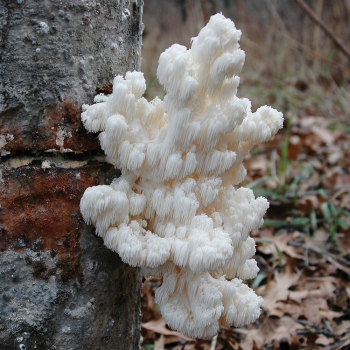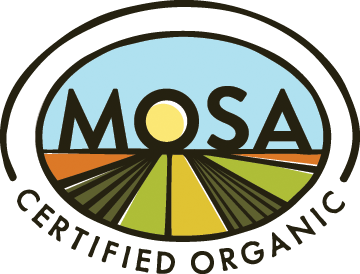Comb Tooth
Hericium americanum
Multi-branched and vigorous, this toothy mushroom grows well on beech and sugar maple. It does not form the long bearded clusters as does Hericium erinaceus, instead it appears as mounds of white froth; sweet and delicious. Fruiting occurs most abundantly in the autumn after the year of inoculation and for several years after that. While Comb Tooth has not been as well researched as Lion's Mane thus far for bioactive components, it is a culinary winner; always sweet and fragrant, regardless of the culture method. Great Lakes region isolate.
Cultivation: Both of the Hericium species we carry can be cultivated on natural logs using a process very similar to Shiitake cultivation. Hericium is a slower growing, less aggressive fungus, so doubling the inoculation rate will speed up the colonization and subsequent fruiting. Traditionally, Beech, Sugar Maple and Ironwood are the preferred tree species for growing Lion's Mane and Comb Tooth. Other soft hardwoods such as Tulip Poplar, Aspen, Sweet Gum, and soft maples show promise. In addition to the drill-and-fill inoculation method, the totem-style inoculation method using sawdust spawn has proven to be very successful when using hardwood rounds.
Following spawn run, place the colonized logs in a humid, shady location and watch for fruiting, especially in the fall.
More Information and Tips for Growing Comb Tooth Mushrooms
Multi-branched and vigorous, this toothy mushroom grows well on beech and sugar maple. It does not form the long bearded clusters as does Hericium erinaceus, instead it appears as mounds of white froth; sweet and delicious. Fruiting occurs most abundantly in the autumn after the year of inoculation and for several years after that. While Comb Tooth has not been as well researched as Lion's Mane thus far for bioactive components, it is a culinary winner; always sweet and fragrant, regardless of the culture method. Great Lakes region isolate.
Cultivation: Both of the Hericium species we carry can be cultivated on natural logs using a process very similar to Shiitake cultivation. Hericium is a slower growing, less aggressive fungus, so doubling the inoculation rate will speed up the colonization and subsequent fruiting. Traditionally, Beech, Sugar Maple and Ironwood are the preferred tree species for growing Lion's Mane and Comb Tooth. Other soft hardwoods such as Tulip Poplar, Aspen, Sweet Gum, and soft maples show promise. In addition to the drill-and-fill inoculation method, the totem-style inoculation method using sawdust spawn has proven to be very successful when using hardwood rounds.
Following spawn run, place the colonized logs in a humid, shady location and watch for fruiting, especially in the fall.
More Information and Tips for Growing Comb Tooth Mushrooms
-
Comb Tooth - (Hericium americanum) Plug Spawn
Multi-branched and vigorous, this toothy mushroom forms clusters of white frothy mounds; sweet and delicious!$21.00–$45.00 -
Comb Tooth - (Hericium americanum) Sawdust Spawn
Multi-branched and vigorous, this toothy mushroom does not form long, bearded clusters like Hericium...$26.00








